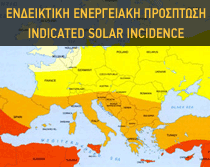04 February 2010
EU plans grid upgrade for renewables

But the official cautioned that whether the European Commission should be responsible for executing the plan is a whole different matter."We are not the Commission grid planners. We don't have the experience, I'm not sure we are the right people to do it," he said. "But I think we need to put in place a framework for it to be done because you're probably right, otherwise it won't be done."
New grid infrastructure is set to cost Europe billions of euros, but upgrading the aging networks will be required to integrate all the intermittent renewable energy that should be produced by the end of the next decade. The EU has a legal target to cover 20% of its energy consumption from renewable sources by 2020.
Europe's grids were last overhauled in the 1970s with the start of the nuclear era, and are not technically able to integrate vast amounts of renewables. New infrastructure will also be needed to bring in massive amounts of electricity produced by offshore wind turbines.Ian Marchant, chief executive of Scottish and Southern Energy, pointed out the scale of finance that will need to be found in order to reach the 2020 target.
He estimated that around �350 billion would have to be invested in renewable energy in Europe in the next decade. This excludes the grid, which can easily add another �150 billion to the equation, he said.
"We're about to borrow about 500 million euros from the EIB [European Investment Bank] to fund offshore wind. That's great, but it's taken a year to 18 months to get through the bureaucracy of the EIB. And would it be up for lending me ten times that amount over the next ten years?" Marchant asked.
The power company chief said that funding is actually available from growing European pension investments. Instead of investing in high-risk equity, the money could be harnessed to build the energy infrastructure of the future, he said."What you want to be investing in is quality infrastructure assets that will be around and pay out when you retire," Marchant said, evoking the idea of infrastructure bonds, which many companies held in the past.
Will the EU meet its renewables target?
Member states expect by and large to meet their national renewables targets by domestic production, their forecast documents submitted to the Commission show.But van Steen pointed out that they are yet to deliver on statements made in the documents.He noted that although most member states expect to have surplus production, some will run into trouble just before 2020. This is because national governments negotiated a trajectory that is easier at the beginning and steeper towards the end.
"We at the Commission said we thought it was not really a good thing to do, but member states insisted on that. But what we now see when we add up the projections of member states is that until 2016/2017 most member states are quite above their trajectory, and then either they join their trajectory or in some cases fall slightly below it by 2020," said van Steen.A handful of EU governments are late in submitting their projections, including two big players: Italy and the UK.Ian Marchant said that said the UK would probably exceed its renewable electricity target, but would fail to meet its heating target as it "hasn't even started yet".





